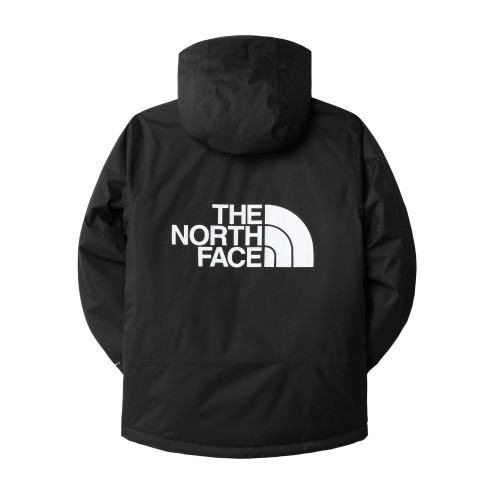
Cross-country ski summer is an excellent time to learn and improve your skills for the season. You can explore new terrain and take lessons with a professional to get the most of your skiing experience this winter.
Cross country skiing is one of the most popular types. It's easy to learn. Begin with an experienced friend and, if possible, start in a snowy area with groomed trails.
If you are unable to find an open space, a local park or recreation area might have excellent trails for you. Be sure to check the weather forecast, and pack warm clothes.
Skiing requires you to maintain balance and weight control so you don't slip down the slope. It is easy to do this by putting your hands on each knee when you are going downhill. This helps keep you stable and reduces the possibility of injury when you fall downhill.

You can also use your arms for help when you are skiing downhill. This is called the "shuffle", which involves moving the pole tips down into snow and activating the core muscles to help you stay upright. You can do this several times before you switch to the glide. The glide involves activating the arms as your pole tips are moved up into the snow.
Cross country skiing is available in many variations, including skate, classic, and telemark. Each type of cross-country skiing requires unique skills. Before you start any new skill, it is important to know the differences.
Beginner skiers should focus on a few techniques to improve their balance and overall endurance. This will give them confidence to advance in their skiing abilities.
V1, V2, V2, Alternate, Double Pole, Doble Pole with Kick, Tuck, and Stride are all basic poling movements that can be used in various cross country skiing disciplines. Some professionals incorporate these movements into their training routines.
Cross-country skiing is a great option for intermediate and beginner skiers who are looking to challenge themselves and improve their fitness. Cross country skiing is a great alternative to snowshoeing. It can be done in any climate.

You need to practice a lot in order to learn how ski touring works. A skilled coach or instructor can teach you the basics of ski touring, such as how to handle your gear, navigate your route, and make efficient turns.
To keep your skills sharp for the coming ski season, you should ski tour at least twice per week during the cross-country ski summer. This will help increase your stamina and strength as well as teach you how to use skis more efficiently and improve skiing performance.
Ski touring offers the greatest advantage: You can take your time and enjoy the scenery. This will not just boost your mood but will also keep you safe.
FAQ
When traveling, what should you remember?
When you travel, you'll find yourself in situations with little time to make decisions. Prepare to be flexible.
You could be stuck there for hours, days and even weeks. You can plan ahead to ensure you have water, food, shelter, and somewhere to sleep. But if you haven't, you may have to improvise.
In these situations, you will probably need to rely upon what you know best. This means that you will need to make quick decisions based on your intuition and experience.
But sometimes, you won't have any choice. Sometimes, however, you will have to make do with what you have. You'll need to adapt quickly to these situations.
Keep calm, be focused, and take action. Don't panic. Instead, stay focused on what you have control of.
You can choose which direction you want to go if you're lost among the woods. If you are hungry, you can eat mushrooms or berries. If you're thirsty, you can drink rainwater or melt snow.
You can also rest if you are tired. If you're cold, you can bundle up. You can also change your clothes if you are wet. Whatever you decide, you'll feel better if you stay positive.
What's the first thing you should do when you arrive at your travel destination?
A plan should be prepared for each step of your journey. This helps you to know what to expect and where you should go next.
It is important to plan ahead so you don't forget anything.
You should also research what museums, parks, or landmarks you want to visit if you are planning to visit a city more than once.
Also, you may want to look into getting a map of the area and reading up on the region's history.
How much luggage do I need?
The amount of luggage you take depends on the length of your trip. You will only need to bring hand luggage if you're traveling by plane. This is typically less than 20kg. If you're traveling by bus or train, you'll need more space.
You will receive a form with all the details about your flight when you arrive at airport. This will include information like the weight of your bag and whether you need assistance in checking them in.
This must be done before you leave your home. If you don’t, you may end up sitting around waiting while everyone else goes through their bags.
Because you never know what could happen, it is better to travel light. You won't be able to use your bag if it gets lost.
Statistics
- Between the ages of 11 and 13, kids, or tweens, will likely want some autonomy but also need boundaries. (travelandleisure.com)
- Alcoholic beverages with more than 24% but not more than 70% alcohol are limited in checked bags to 5 liters (1.3 gallons) per passenger and must be in unopened retail packaging. (tsa.gov)
- They're also likely to offer babysitting services, in case you'd like to have dinner one night after 7 p.m. (travelandleisure.com)
- That's an 18% jump from 2019, the previous record year. (travelandleisure.com)
- Pack sweaters, jackets, and underwear in reusable compression bags creating up to 75% more space in your luggage. (wikihow.com)
External Links
How To
How to plan for your next holiday
Planning a trip includes many things such as booking flights, hotels and car rentals. It also includes important considerations such as budget, schedule, destination, weather forecast, etc.
These are the things you should keep in mind as you plan your next vacation.
We have prepared a step-by, step guide to help with your next vacation planning. Based on customer feedback and our own experience, this guide was created. We hope this guide helps you to plan your next vacation with minimal hassle.
Steps:
-
Your Budget is an important step in planning your trip. Before you begin planning for your trip, you need to know how much money it is you are willing and able to spend. You might have to cancel your plans if you don't have enough money.
-
Book Flights - The first thing you should do after deciding on your budget is book your tickets. Be sure to get the lowest price flight deal. Check to see if there are any seasonal specials offered by airlines. These deals could save you a lot of money.
-
You can choose your destination - Once you have purchased your ticket, you need to decide where you would like to go. Multiple factors come into play when choosing your destination, including location (where you're going), climate (what season to visit), culture (how friendly people are), and cost (how affordable it is).
-
Find Accommodations - After choosing your destination, the next step would be finding accommodations. There are many options for accommodation, from budget hostels to luxurious suites. It all depends on what you want and how much space you have. A hotel is not the best choice if you want to be close to the city centre. However, homestays may be more suitable for you if your preference is quieter and away from crowds.
-
Select Activities & Attractions. After you have chosen your accommodation, now it's time to choose the activities and attractions that will be included in your itinerary. Depending on the length of your stay, you can either choose only a few activities or add several new ones throughout your trip.
-
Plan Your Trip - Once you have decided on the attractions and activities you want to include, you can now plan your itinerary. You should follow a set schedule to get the most out of your trip. However, if you're free to move around at your convenience, you can enjoy your trip even more.
-
Make an itinerary - This is where you include all details about your trip. From flights to accommodation, activities to restaurants, you should write them down and create a list of things to remember.
-
Research online - Make sure you do your research before you leave for your trip. Read reviews and testimonials to find out what other travelers think about different destinations. This will allow you to plan your trip accordingly.
-
Take care when packing. Too many clothes is not a good idea. Avoid bringing more than three sets of clothes. Make sure you bring clothes that are appropriate for the area.
-
Always be prepared Before you leave for your trip, make sure that everything is in order. It's not a good idea to spend time looking for documents while you are still on the move.